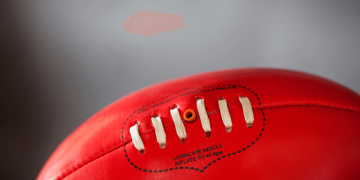Surfing in Australia: A Beginner’s Guide
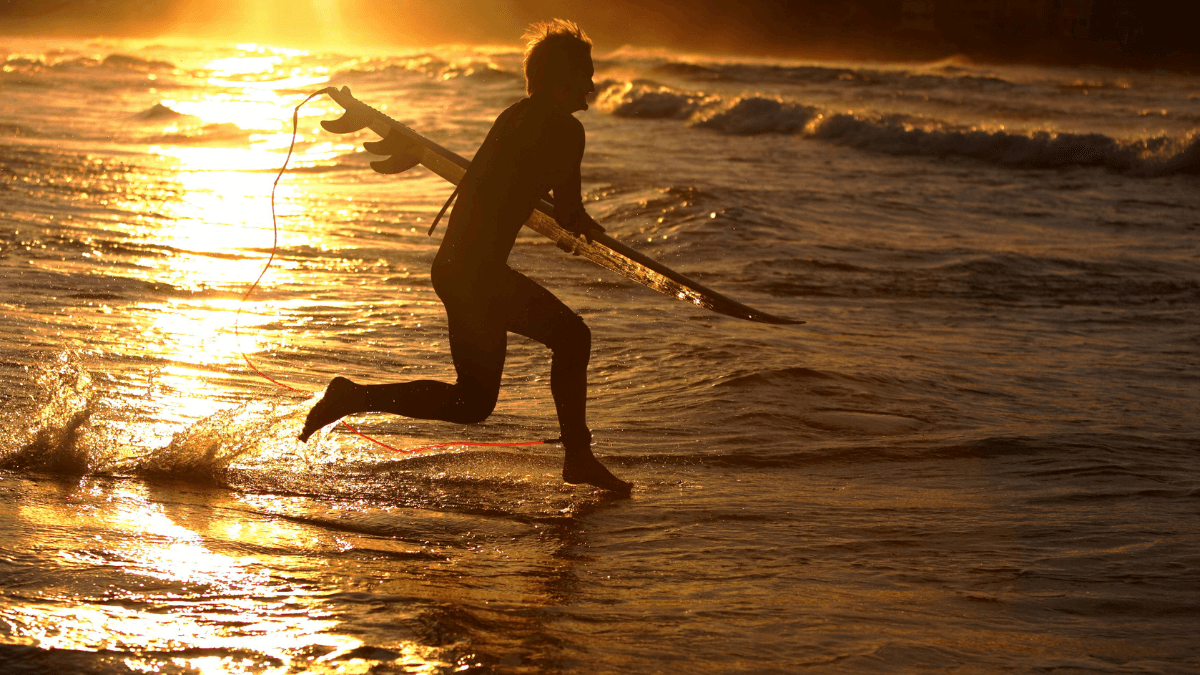
Standing on a surfboard, seawater in your hair, and the sound of the ocean underfoot has a very freeing effect. For many Australians, surfing is more than just a sport; it’s a way of life, a rite of passage, and a deep connection to the sea that permeates coastal society. And Australia is among the best places on Earth to study with thousands of miles of amazing coastline.
This beginning surfing Australia guide will enable you to paddle out confidently whether your goal is to have a fresh ocean adventure or just catch your first wave. From gear and safety to choosing the ideal beach and learning the unwritten laws of surf culture, this is all you should know about how to surf in Australia.
Why Surfing in Australia is a Must-Try
Aussie beaches are well-known around the world. Surfers of all abilities can find waves off the coasts of Australia, from Bondi to Byron Bay, Torquay to Noosa. The local populations here are quite hospitable to newcomers, and learning to surf here means being a part of a surfing legacy that includes some of the most renowned pros in the world.
As an added bonus, surfing is a great way to get some exercise, boost your mood, and connect with nature. Surf schools abound in Australia, and the beaches are ideal for novices thanks to the warm water and consistent swell.
Choosing the Right Beach to Learn
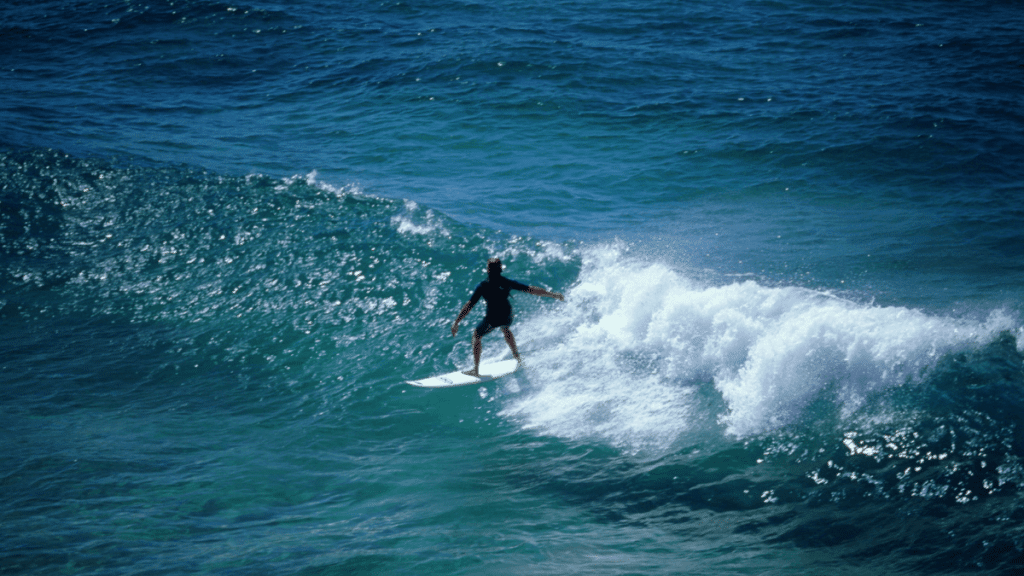
Not all waves are created equal, and if you’re a beginner, choosing a beach with gentle, consistent waves is essential.
Bondi Beach, NSW is a hotspot for new surfers, with several surf schools and a great vibe. Noosa Main Beach, QLD, offers long, soft waves that are ideal for practicing pop-ups and turns. Torquay, VIC, the gateway to the Great Ocean Road, is another safe bet with sheltered spots for newbies. Meanwhile, Scarborough Beach in WA provides manageable swells and a friendly learning environment.
Always check the beach’s surf conditions online before heading out. Websites like Surfline and Swellnet offer updated forecasts, tide times, and safety alerts.
Picking the Right Equipment
No need to shell out a ton of cash for the most cutting-edge, high-performance board if you’re just starting off. Take baby steps and be realistic.
Your greatest ally is a longboard with a soft top. You can easily catch smaller waves on these boards since they are sturdy, buoyant, and forgiving. Aim for a length of about 8 to 9 feet. In southern Australia, where the waves can be frigid, a wetsuit is especially necessary, as is a leash to prevent you from chasing your board after every fall. Wax is also helpful for grip.
You won’t have to buy anything until you’re absolutely sure you adore surfing (spoiler: you most certainly will). Most surf schools and beachfront stores provide rental choices.
Booking a Lesson: Is It Worth It?
Absolutely. Although you can teach yourself, working under the direction of a good teacher will greatly advance you. Beginning packages from ocean safety and paddling technique to how to stand up correctly, surf schools cover all.
Small groups conduct lessons, and teachers know the safest areas for students. They will enable you to gain confidence and fix early errors, therefore improving the flow and enjoyment of your surfing experience.
What to Expect in Your First Lesson
Your first course of instruction will concentrate the fundamentals rather than on destroying huge barrels. A land-based warm-up will teach you how to position yourself on the board, paddle appropriately, and practice your “pop-up,” the motion from lying down to standing up.
Once in the ocean, you will find waist-deep surf with gently rolling waves. Often helping you into waves, instructors enable you to concentrate on time and balance.
You’ll drop. Many. Still, part of the fun is that. Most beginners stand up in their first few lessons; if not, surfing the whitewash on your belly is rather exciting.
How to Surf in Australia: Basic Techniques
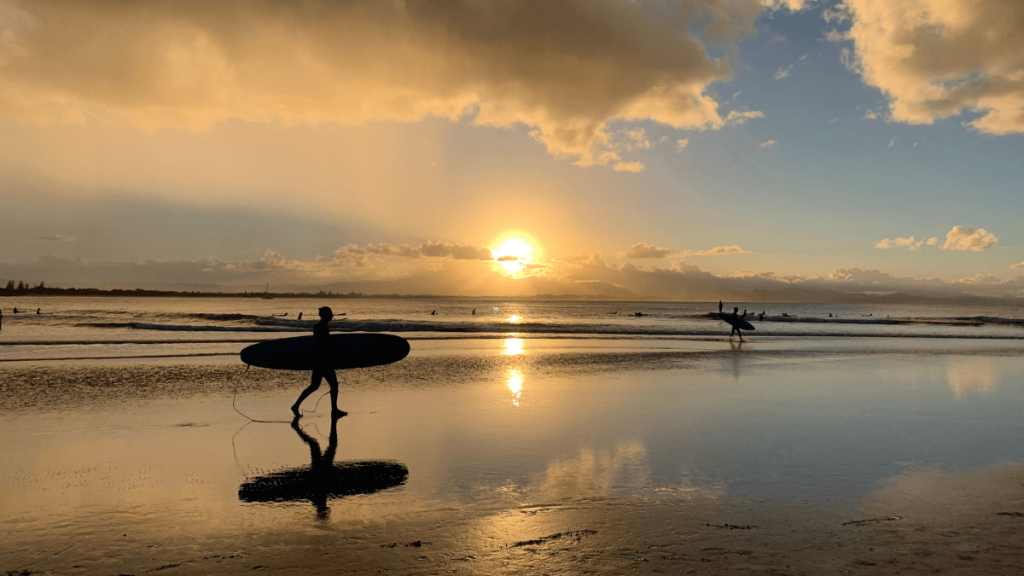
Let’s break down the core techniques every beginner should know:
- Paddling: Keep your body centered on the board, chest up, and paddle with alternating arms using deep, smooth strokes.
- Positioning: Stay toward the back third of the board—too far forward and you’ll nose-dive, too far back and you won’t catch the wave.
- Pop-up: Once you feel the wave catch you, press your hands flat on the board, push up, and spring your feet beneath you in one smooth motion.
- Stance: Feet shoulder-width apart, knees slightly bent, weight balanced. Eyes forward—not at your feet!
These movements take time, so be patient with yourself. Consistency and practice are key.
Understanding Surf Etiquette
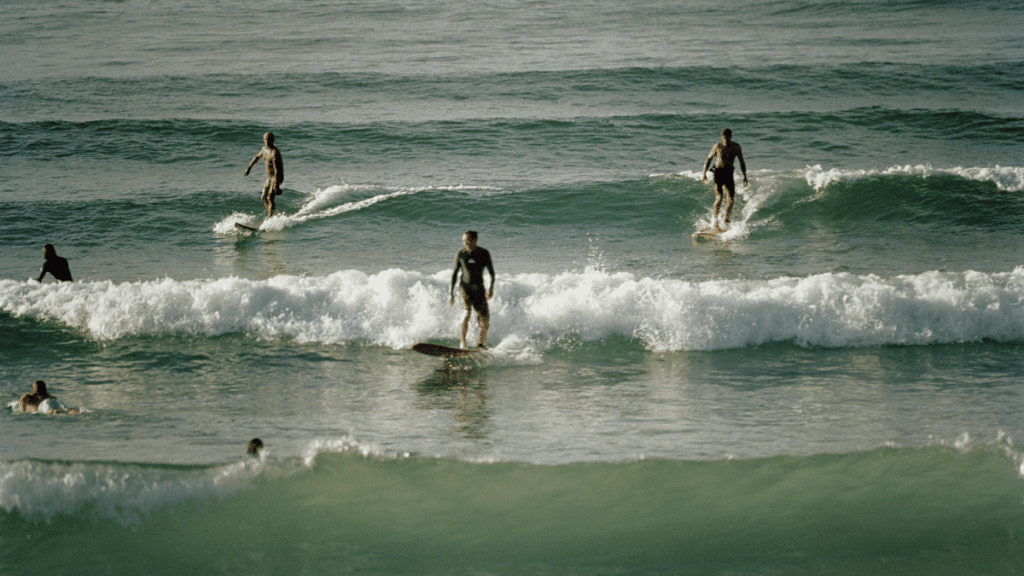
Surf culture comes with unspoken rules designed to keep everyone safe and respectful in the lineup. As a beginner, learning these early on will help you blend in and avoid conflict.
- Don’t drop in: Only one person rides a wave at a time. The surfer closest to the breaking part of the wave (the peak) has the right of way.
- Don’t snake: Avoid paddling around someone to steal their spot in the lineup.
- Hold on to your board: Letting it fly in crowded surf is dangerous.
- Respect the locals: If you’re visiting a well-known break, observe before paddling out and follow the vibe of the regulars.
Even if you’re riding the whitewash near shore, these habits will help you grow into a responsible surfer.
Safety First: Tips to Stay Protected
Surfing is thrilling, but the ocean can be unpredictable. Keep these safety basics in mind:
- Always surf between the red and yellow flags if you’re unsure of the beach’s layout.
- Know your limits. If the waves look too big or currents too strong, wait for another day.
- Watch out for rips—those strong channels of water pulling out to sea. Learn how to identify them and never try to paddle against one. Instead, paddle parallel to the beach until you’re out of it.
- Use reef-safe sunscreen and stay hydrated. It’s easy to lose track of time in the water.
How Often Should You Surf as a Beginner?
You will get better faster the more regularly you surf. If at all possible, try for two to three sessions a week. From understanding wave patterns to honing your pop-up, every surf instructor imparts fresh knowledge.
If initially your progress seems slow, avoid becoming demoralized. Surfing teaches endurance and patience as much as it does technique. Regular wipe-out even from experienced surfers. Every fall marks a forward step.
Building Surf Confidence
Mindset matters. If you’re nervous, that’s completely normal. The ocean is vast and powerful, and learning to surf asks you to surrender to it in a way few other sports do.
Here are a few mental tips to build confidence:
- Celebrate small wins: Standing up, catching a wave, or even paddling out without falling off are all achievements.
- Buddy up: Surfing with a friend makes it more fun and safe.
- Practice breath control: The better you get at staying calm underwater, the more relaxed you’ll feel in the surf.
And remember—every expert was once a total beginner.
The Surf Lifestyle: What Makes It So Addictive?

The feeling of being a part of something greater than oneself is a significant draw for surfers. Being at one with the water is awe-inspiring, reflective, and dynamic. You learn to read the waves and ride them instead of fighting them when you surf.
A strong sense of community is also present. From dawn patrols in the wee hours of the morning to post-surf coffees, surfers connect over a common passion. Looking at the water after you’re hooked makes it difficult to not fantasize about the trip.
Best Times of Year to Learn
Australia’s surf seasons vary by region, but in general:
- East Coast (Sydney, Gold Coast): Summer and early autumn offer gentle waves and warmer waters.
- South Coast (Torquay, Adelaide): Late spring to autumn is ideal, as winter swells can be too rough for beginners.
- West Coast (Perth): Consistent waves year-round, but summer provides smaller, manageable surf for learners.
- North Queensland (Noosa, Cairns): Avoid the stinger season (Nov to May) unless the beach is netted or you wear stinger suits.
Staying Inspired: Watching the Pros
Watching Mick Fanning, Stephanie Gilmore, or Tyler Wright—legends of Australian surfing—is the ultimate source of motivation. Like us, they made mistakes, had setbacks, and learned from their mistakes.
You may observe professional surfers at work during World Surf League events, local competitions, or even just by visiting a nearby beach. You’ll begin to notice trends, changes, and the pulsation of the waves.
Final Thoughts: Go With the Flow
Surfing in Australia is a life-altering and breathtaking experience. Surfing teaches you more than simply how to ride waves; it teaches you about nature’s rhythms, your own strengths and weaknesses, and your own boundaries.
The path from beginner to competent surfer is filled with setbacks, burns, salty grins, and the odd sting from a jellyfish. But you’ll feel closer to the water, more self-assured, and more energized with each paddle session.
Get yourself down to the water and get on that board. The waves of Australia are poised and ready.






